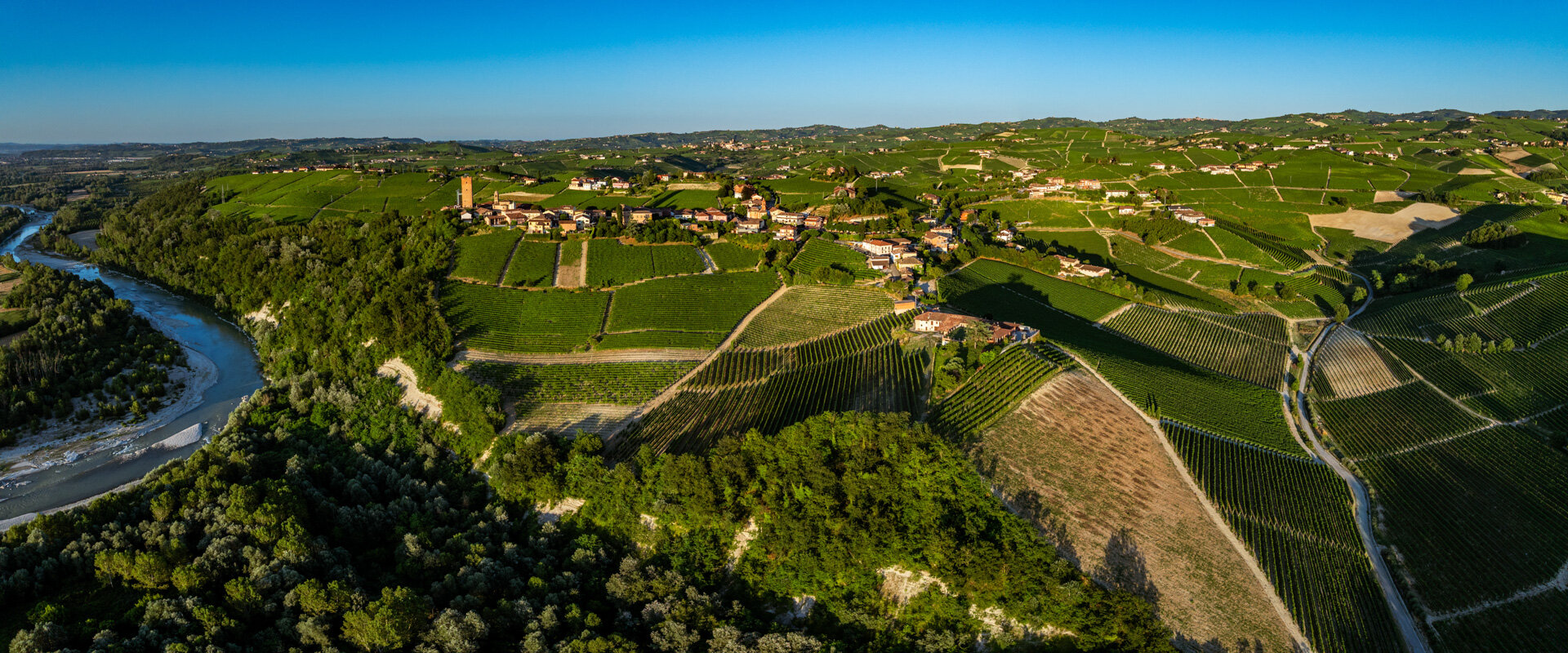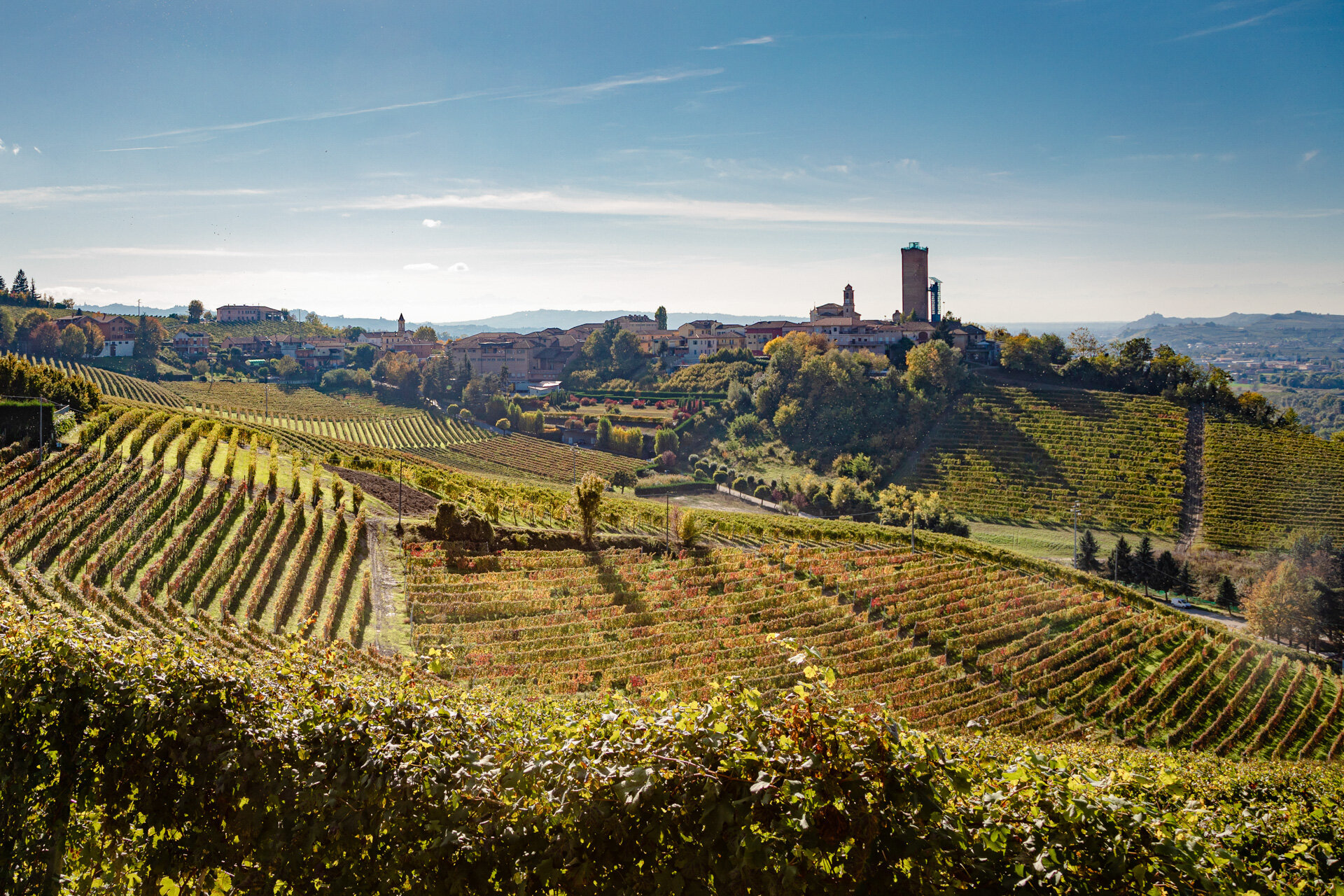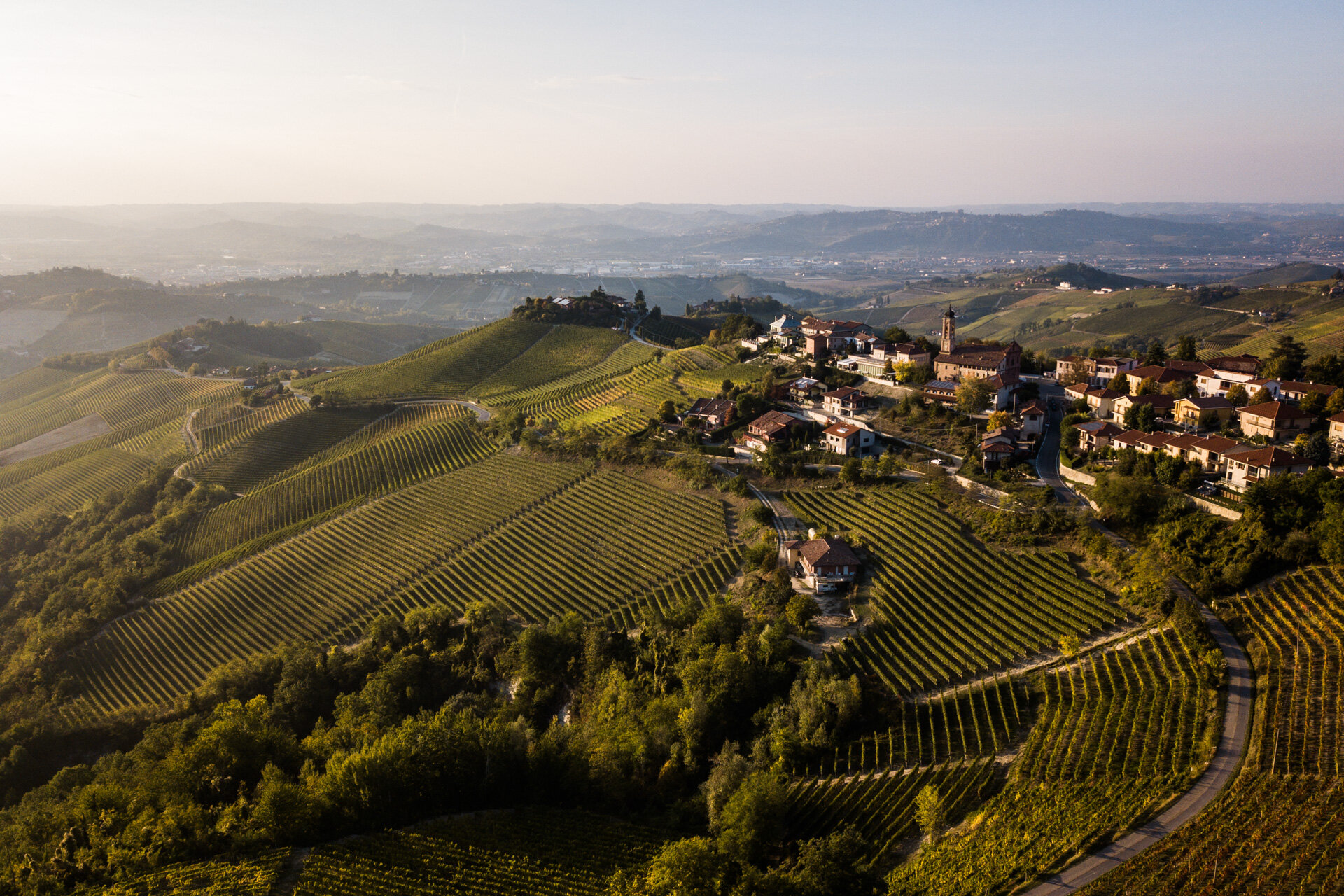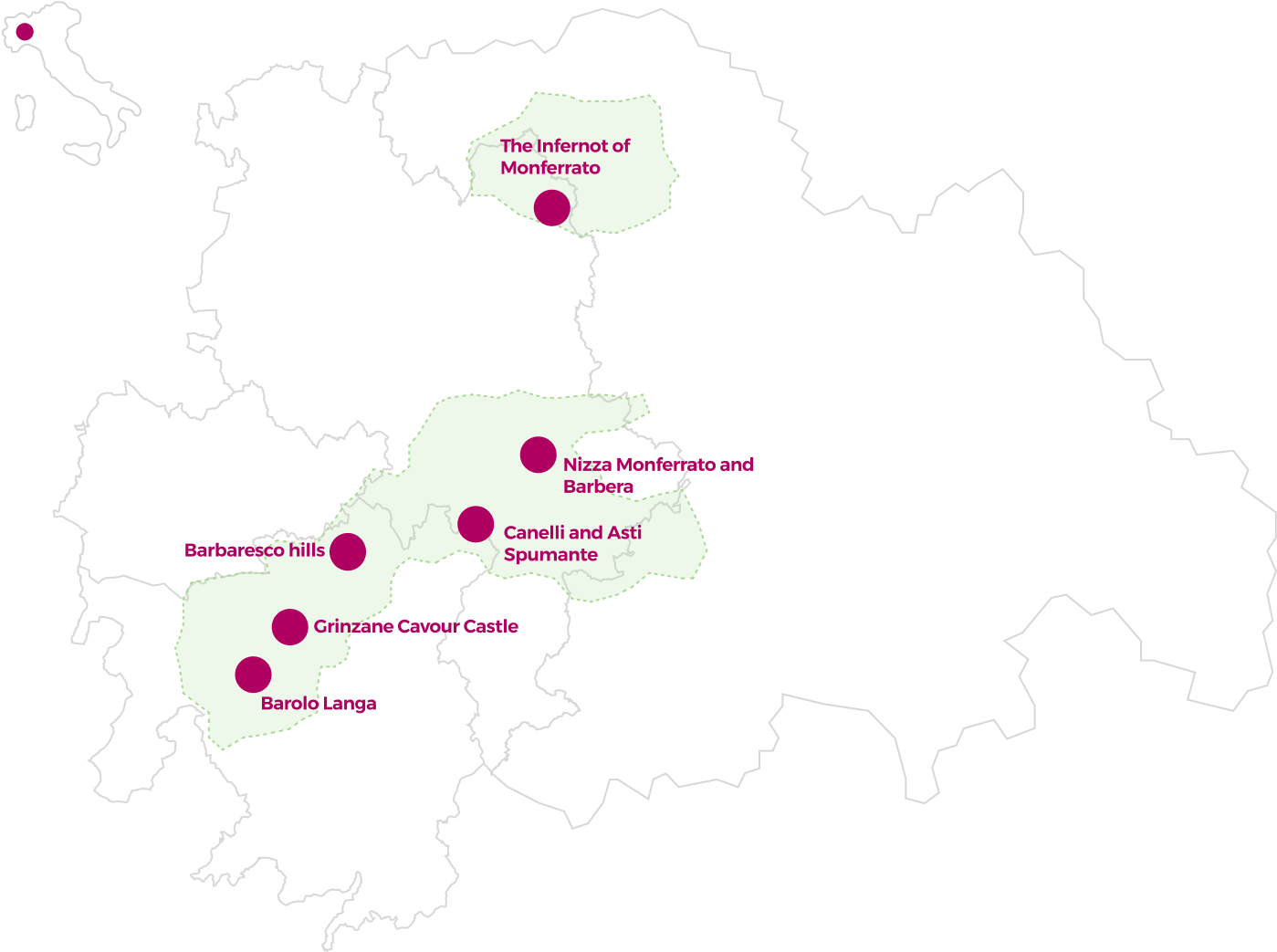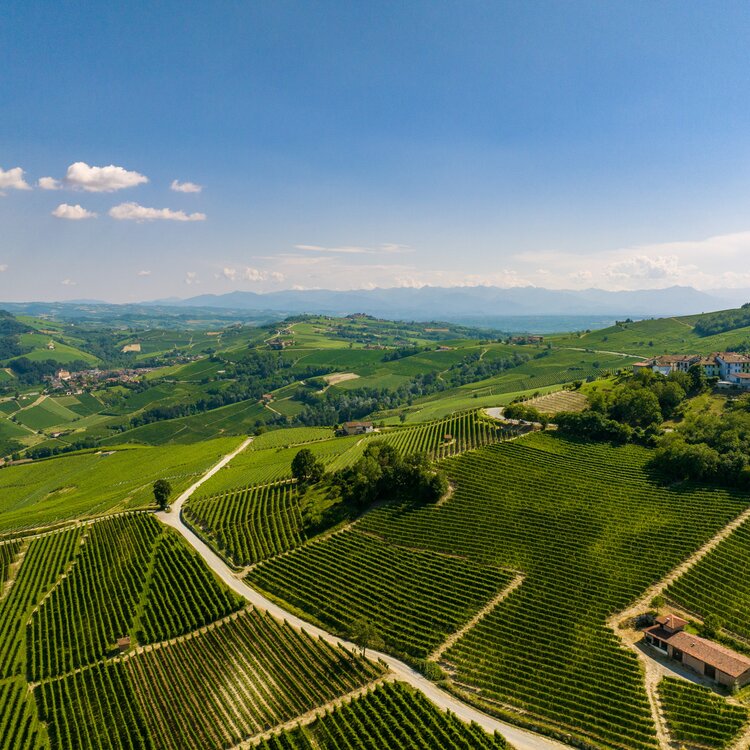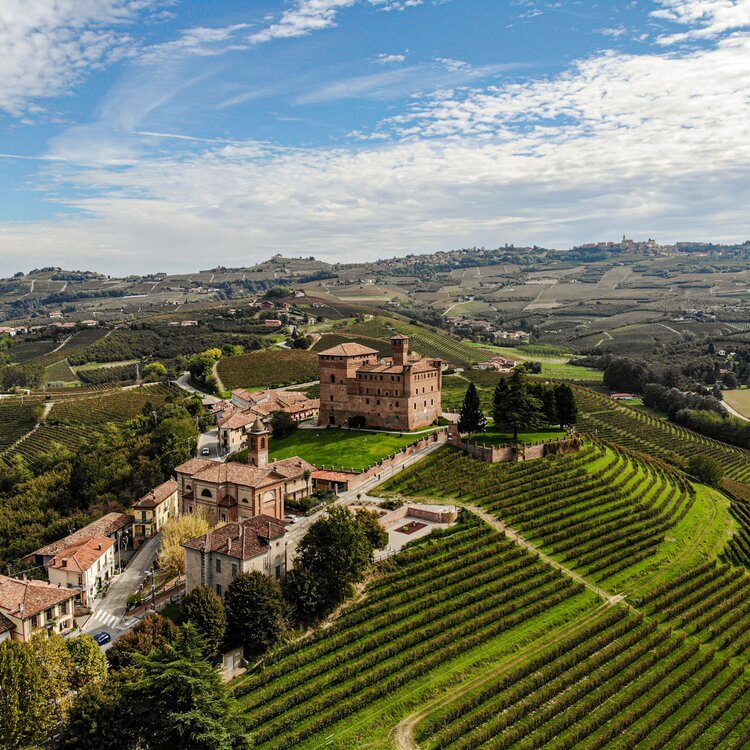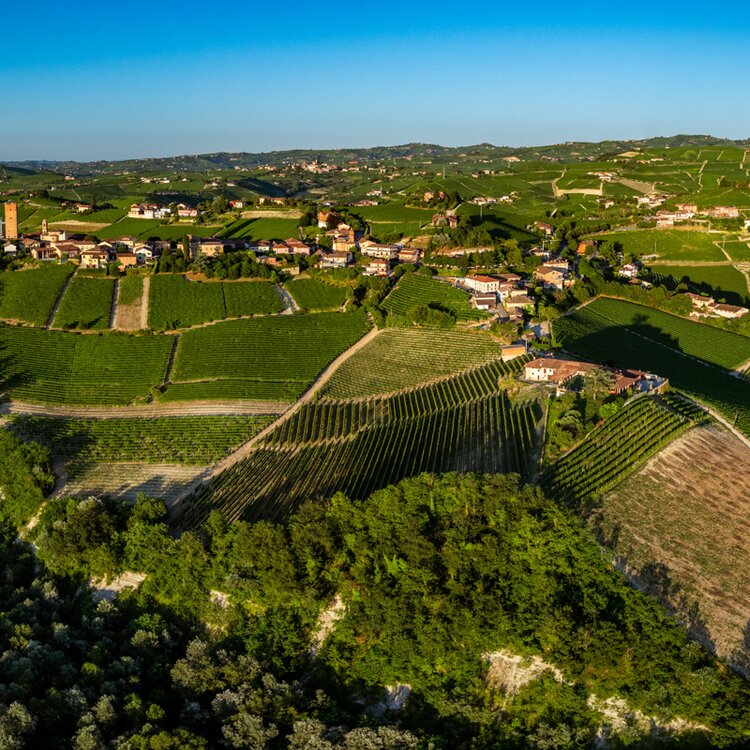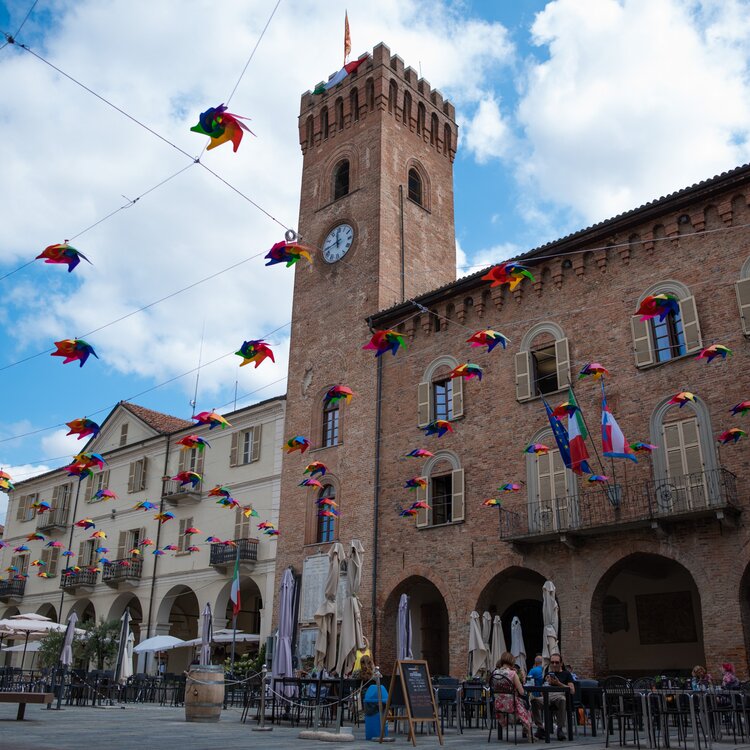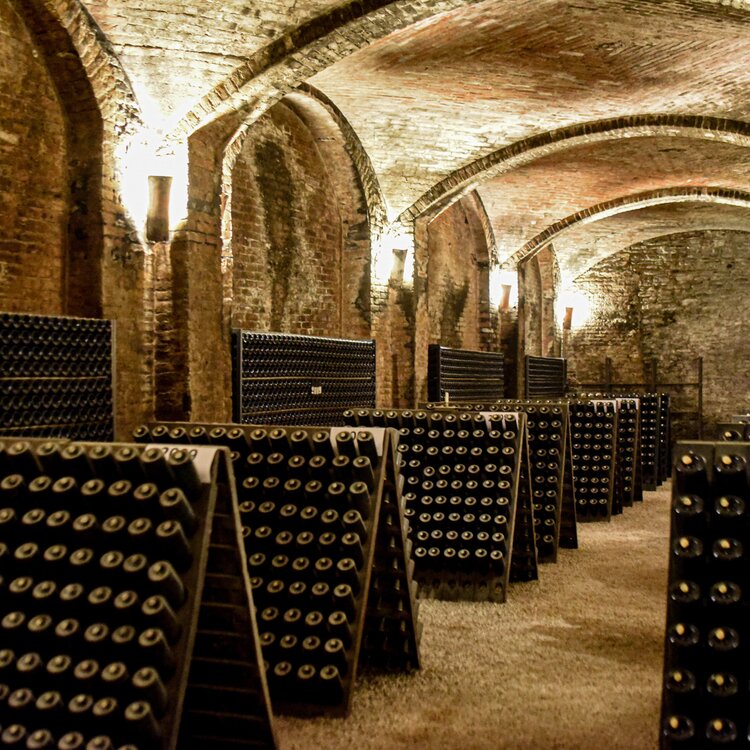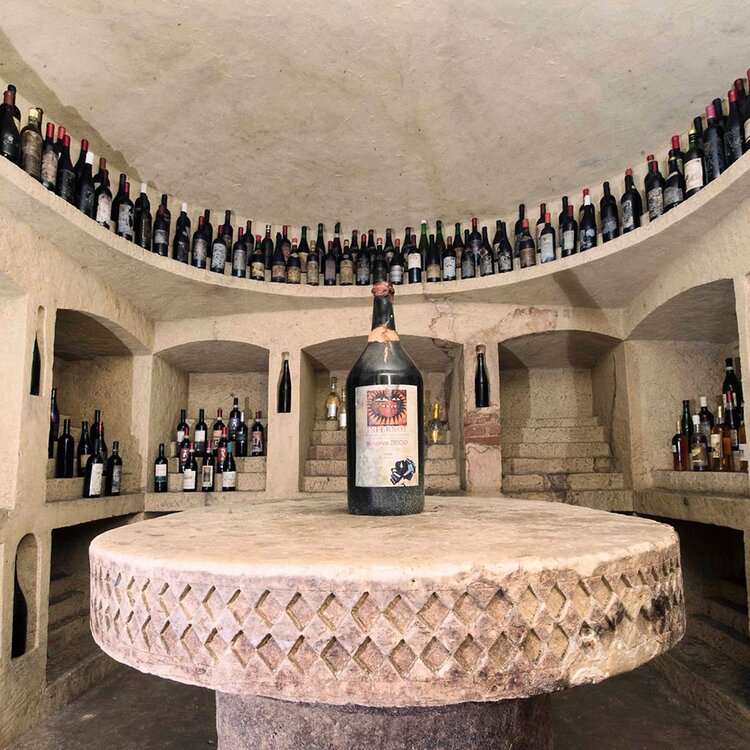On the right bank of the Tanaro River, in the heart of the Langhe region, lies the Barbaresco landscape: hills shaped by Nebbiolo grapes, hilltop villages, farmhouses and towers that tell the story of wine and a sense of belonging.
What should you visit in the Barbaresco area?
This component comprises two old medieval towns, Barbaresco and Neive, as well as a network of vineyards, rural villages and wineries that showcase the productivity and culture of the territory.
The name Barbaresco derives from the ancient "barbarica silva", which refers to the woods that covered the area during the Roman era.
The village of Barbaresco is home to the most impressive medieval tower in Piedmont. Standing at 36 metres high, it is all that remains of the castle that once stood here. For centuries, the tower has been a visual landmark for the whole area, and visitors can now enjoy panoramic views of the vineyard landscape from the top. This landscape is marked by the natural line of the Tanaro River, which forms a bridge between Langhe and Roero.
Here, Nebbiolo is grown in purity and vinified according to a refined and consistent tradition. Like Barolo, Barbaresco is now one of the world's best-known and most highly regarded aged red wines: to obtain the designation, it must be aged for a minimum of 26 months, at least 9 of which must be in wooden barrels. Barbaresco is characterised by its fruity and floral profile, fine tannins, and softer structure compared to Barolo.
The area is home to over 80 wineries, including the historic Cantina dei Produttori di Barbaresco and the Enoteca Regionale del Barbaresco, which is located in the former Confraternity of San Donato.
Every element of the landscape – architectural, agricultural and cultural – contributes to the creation of a deep and vibrant identity.
